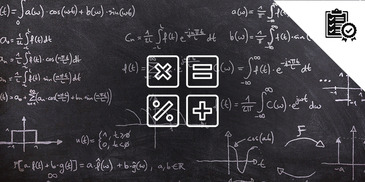
Video tutorial uses examples to reinforce how to solve linear equations. [6:35]
- Subject:
- Mathematics
- Material Type:
- Audio/Video
- Provider:
- Art of Problem Solving
- Date Added:
- 07/01/2022


Video tutorial uses examples to reinforce how to solve linear equations. [6:35]

Video tutorial uses examples to reinforce how to solve linear equations. (Part 2) [6:01]

Video tutorial uses examples to reinforce how to solve linear equations. (Part 3) [5:11]

Video tutorial uses examples to reinforce understanding of subtraction problems. [5:24]

Video tutorial uses examples to reinforce understanding of how to find the sum of square roots. [4:37]
![ArtsNow Learning: A Day with Dali [PDF]](https://openspace.infohio.org/static/newdesign/images/materials/default-thumbnail-index.png)
In this lesson, students will look at the print, "Persistence of Memory" by Salvador Dali and talk about what they observe, including the importance of foreground, middle ground, and background in a painting. Students will then visually draw a creative clock ticking throughout the day, using the sky to tell morning, afternoon and evening as the hands on the clocks move.
![ArtsNow Learning: Monumental Construction [PDF]](https://openspace.infohio.org/static/newdesign/images/materials/default-thumbnail-index.png)
In this lesson, students work in teams to create large paper sculptures using newspaper rolled up into tubes.
![ArtsNow Learning: Monumental Construction [PDF]](https://openspace.infohio.org/static/newdesign/images/materials/default-thumbnail-index.png)
In this lesson, students work in teams to create large paper sculptures using newspaper rolled up into tubes.
![ArtsNow Learning: Moving Shapes [PDF]](https://openspace.infohio.org/static/newdesign/images/materials/default-thumbnail-index.png)
These activities will allow students to discover the concepts of geometry through shape exploration and the creation of choreographic sequences.
![ArtsNow Learning: Moving with Fractions [PDF]](https://openspace.infohio.org/static/newdesign/images/materials/default-thumbnail-index.png)
In this lesson, students use movement phrases to model common fractions and decimal fractions with like denominators. They compare the fraction of locomotor and non-locomotor movements in a movement phrase. Students then create their own movement phrase and use fractions and decimals to describe their performance. The lesson helps students recognize that fractions are used in many aspects of our world, including the arts.
![ArtsNow Learning: Moving with Mathematics [PDF]](https://openspace.infohio.org/static/newdesign/images/materials/default-thumbnail-index.png)
In this lesson, students explore the concepts of fractions, percentages, and decimals by creating dances using locomotor and non-locomotor movements.
![ArtsNow Learning: Multiplication / Division Hula [PDF]](https://openspace.infohio.org/static/newdesign/images/materials/default-thumbnail-index.png)
In this lesson, students use their physical bodies to solve multiplication and division problems, using Hula Hoops to help group and enact math problems.
![ArtsNow Learning: Operations and Algebraic Thinking with Music [PDF]](https://openspace.infohio.org/static/newdesign/images/materials/default-thumbnail-index.png)
Counting the number of beats in a common folk song, the students will use composition and classroom instruments to discover different combinations for accompaniment.
![ArtsNow Learning: Performing Perimeter [PDF]](https://openspace.infohio.org/static/newdesign/images/materials/default-thumbnail-index.png)
In this lesson, students calculate the perimeter of various geometric shapes and represent the perimeter with a movement phrase. They will identify the types of angles within each shape. Other students will identify the shape that was demonstrated.
![ArtsNow Learning: Personal Pizza Pies: Fun Fractions with Food Art [PDF]](https://openspace.infohio.org/static/newdesign/images/materials/default-thumbnail-index.png)
In this lesson, students learn about the art of Wayne Thiebaud, and then create collaged personal pizza art, cutting their 'pies' into fractions.
![ArtsNow Learning: Problem Solving with Movement [PDF]](https://openspace.infohio.org/static/newdesign/images/materials/default-thumbnail-index.png)
In this lesson, student groups are assigned word problems that require order of operations to be solved. They solve their problems using math and then choreograph an answer to their problems that incorporates the order of operations. These are performed for the class and the associations made by the group are explained.
![ArtsNow Learning: Problem Solving with Movement [PDF]](https://openspace.infohio.org/static/newdesign/images/materials/default-thumbnail-index.png)
In this lesson, student groups are assigned word problems. They are tasked with solving their problems using dance and then choreographing answers to their problems. These are performed for the class and the associations made by the group are explained.
![ArtsNow Learning: Realizing the Power of Your Own Creativity [PDF]](https://openspace.infohio.org/static/newdesign/images/materials/default-thumbnail-index.png)
In this lesson, students interpret a poem called 'The Little Blue Engine' by adding music, movement, visual art, and drama. After performing their creation, they will discuss any mathematical and/or scientific connections that have a natural fit in this learning experience.
![ArtsNow Learning: Self-Portrait Drawing [PDF]](https://openspace.infohio.org/static/newdesign/images/materials/default-thumbnail-index.png)
In this lesson, students will explore self-portraiture by looking at classical portrait paintings, such as Diego Velazquez's La Infanta Margarita or Raphael's Portrait of Baldassare Castiglione. A close look at these works reveals mathematical relationships and proper proportions that students can incorporate into their own self-portraits.
![ArtsNow Learning: Self-Portraits with the Touch of a Finger [PDF]](https://openspace.infohio.org/static/newdesign/images/materials/default-thumbnail-index.png)
In this lesson, students will explore self-portraiture by looking at classical portrait paintings, such as Diego Velazquez's La Infanta Margarita or Raphael's Portrait of Baldassare Castiglione. A close look at these works reveals mathematical relationships and proper proportions that students can incorporate into their own self-portraits.